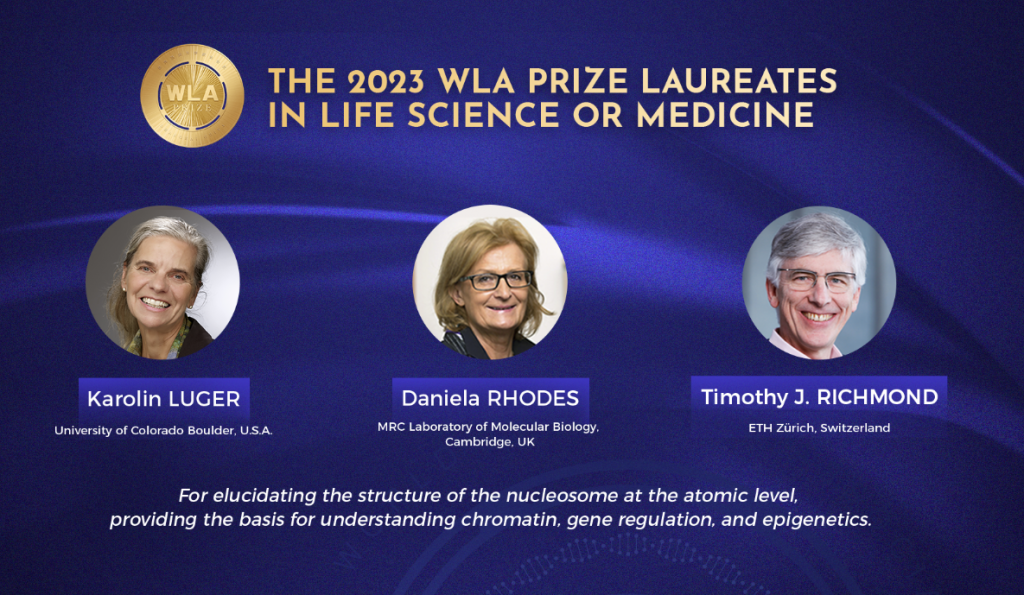Professor Daniela Rhodes receives the 2023 World Laureates Association Prize (WLA Prize)
Congratulations to Professor Daniela Rhodes, an Emeritus Fellow of Clare Hall, who has been announced as one of the recipients of the 2023 World Laureates Association Prize (WLA Prize) in Life Science or Medicine, which she shares with LMB alumnus Timothy J. Richmond, Emeritus Professor of Crystallography of Biological Macromolecules at ETH Zurich, Switzerland, and Karolin Luger, Distinguished Professor of Biochemistry at the University of Colorado, Boulder, USA. They received the prize “for elucidating the structure of the nucleosome at the atomic level, providing the basis for understanding chromatin, gene regulation and epigenetics.”
The prize, established in Shanghai in 2021, seeks to recognise and support notable researchers and technologists from across the world for their contribution to science. It awards two prizes annually; the WLA Prize in Life Science or Medicine and the WLA Prize in Computer Science of Mathematics. This year’s laureates will be honoured at the 2023 WLA Prize Award Ceremony in Shanghai on 6th November.
Daniela first joined the LMB in 1969, initially hired as a research assistant by Aaron Klug to work on the crystal-structure of t-RNA, later turning her crystallisation expertise to the nucleosome core particle of chromatin, the building block of chromosomes, obtaining the first crystals in 1976. This led to the publication in 1977 with John Finch and Aaron Klug of the low-resolution model of the nucleosome using a combination of biochemical data, electron microscopy and X-ray diffraction. She also succeeded reconstituting and crystallising nucleosomes with DNA of homogeneous sequence that was essential for obtaining better diffracting crystals, publishing this in 1979.

Tim Richmond joined the LMB in 1978 as a postdoctoral fellow with Aaron Klug, and later went on to become a Group Leader in the Structural Studies Division. Using Daniela’s crystals, he was able to determine the nucleosome core structure at a resolution of 7Å, published in 1984. This revealed the fundamental architecture of the nucleosome core particle in which about 150 base pairs of DNA wrap around the histone octamer core. In 1987 Tim left LMB for a position at ETH Zurich. There, together with his postdoc Karolin Luger, and using synchrotron radiation, they revealed the atomic structure of the nucleosome at 2.8Å resolution, publishing these results in 1997.
Daniela went on to do a PhD with Aaron Klug as her supervisor and become a Tenured Group Leader at LMB in 1987, focusing her research on the nature and function of nucleosomes and chromatin. Her group determined the structures of important protein–DNA complexes involved in transcription, such as nuclear hormone receptors and zinc-fingers. More recently, she has focused on revealing the structure of telomeres, the tips of our chromosomes that are involved in both aging and cancer. Her group made the unexpected discovery of proteins that bind and promote G-quadruplex formation as well providing the first in vivo evidence for the role of such structures in biology.
Daniela’s work has been recognised with numerous accolades, including election to EMBO in 1996 and the Royal Society in 2007.
Further references
Daniela’s page
WLA Prize in Life Science or Medicine 2023
Delving into the 2023 WLA Prize in Life Science or Medicine